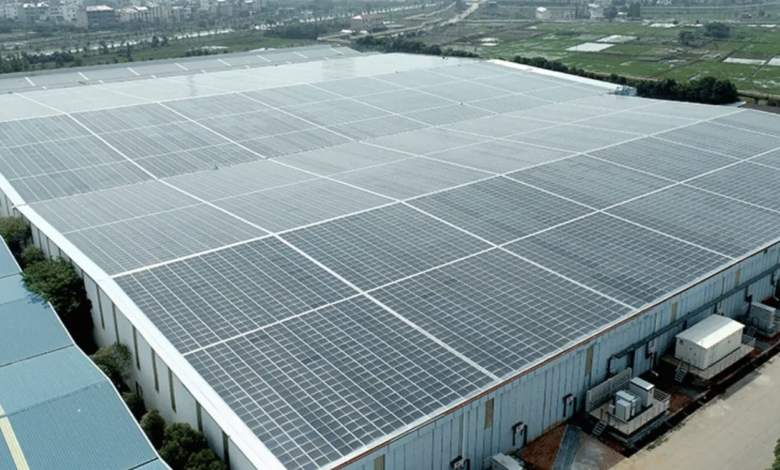Largest photovoltaic roof in the world: China amazes with 120 MW

“Largest photovoltaic roof in the world”, a continually contested record
(Sustainabilityenvironment.com) – New world record for solar energy and once again the preserve of China. In Gaoan, in the central province of Jiangxi, stands in fact the largest photovoltaic roof project in the world. We are talking about 120 MW of capacity, which make the previous world records pale.
According to Sungrow, the company that supplied the pv inverters, it’s not photovoltaic roof tiles or a single pv panel, the installation is actually composed of 11 sub-plants distributed over a total area of about 665,000 square meters, within a famous ceramic production center for the construction industry. At full capacity, the world’s largest photovoltaic roof should generate 120 GWh of clean energy per year, saving the atmosphere up to 96,000 tons of carbon dioxide. And allowing the production site to feed itself electrically only with the energy of the sun.
For optimal operation and quick and easy maintenance, designers decided to connect the panels to iSolarCloud’s Sungrow monitoring platform. The instrument allows fast identification of any malfunctions, promptly increasing the yield of the photovoltaic modules. In addition, the installed inverters are pre-assembled with a storage interface, so you can add batteries at a later time without rebuilding the entire system.
The global BIPV market
But the Gaona system is not the only one to make itself known in the field of BIPV (English acronym of Building Integrated photovoltaics). The Turkish steel producer Tosyalı Holding also sets a world record. The company, in collaboration with the Chinese technology giant Huawei, is implementing a 140 MW solar coverage project in the Mediterranean province of Osmaniye. This will remove the primacy of the regime from that of the People’s Republic.
Read also Low-cost batteries: with Aluminum sulfur and salt batteries, an economical recipe for storage
One element is certain: the photovoltaic roof panel is progressively gaining ground. The BIPV market is expected to reach $94.4 billion by 2031, up from $11.7 billion in 2021, with a compound annual growth rate (CAGR) of 23.2% between now and the end of the decade. In this accelerated trend, Europe plays a leading role. On the other hand, last year, the continent accounted for more than 43% of the market share in integrated photovoltaic construction, with faster implementation in Italy and Germany.





